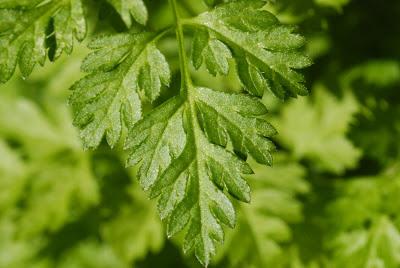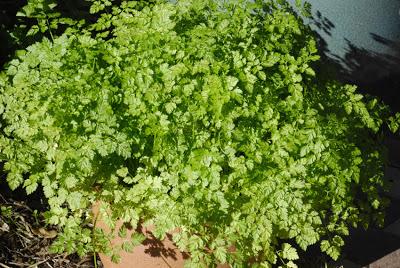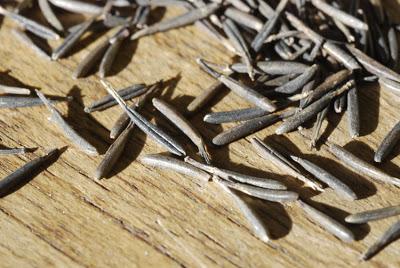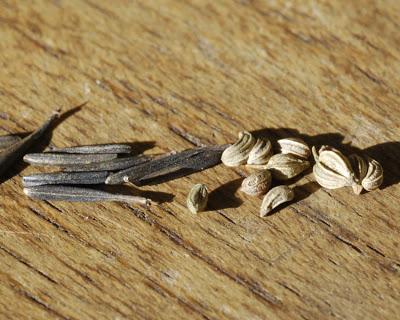Lately, when I head out into the garden in the late afternoon to pick some mixed leafy greens for a salad,I stop at our woolly-headed chervil pot and pick a few of its soft, mildly aniseed-tinged leaves to add their gentle, pleasant flavor to the mix. This lovely little potted herb is one of the stars of our garden right now. It's such a beautiful green color.

Extremely up close and personal, you can see why some people
mistake chervil for parsley, but chervil leaves are much smaller
than parsley, and have an altogether different flavor.

This pot full of baby chervil has probably the softest foliage
of any plant I have ever touched, so soft you sometimes wonder
whether it's actually there. It's round, like a head of fluffy,
woolly hair, and that green color is freshness itself.

As with growing parsley, the secret to growing chervil seems
to be to grow it from seed. As I had my macro lens out for that
opening foliage shot, I thought you might to meet chervil seed.
I sow chervil seed fairly thickly, barely covering the seed with
seed-raising mix. When they come up, I don't bother to thin out
the plants, either. They look so lovely as a dense crowd.

Perhaps a size comparison is more useful: on the left are chervil
seeds and on the right are some curly parsley seeds. So chervil
seed is long, narrow and dark. Chervil comes up more quickly
than parsley (two weeks, compared to parsley's three or four).
Chervil and parsley are relatives (along with carrots and
parsnips) and all these plants grow best from seed, and quite
badly from seedlings (that's because they send down a long
taproot that doesn't like to be disturbed). Like parsley, chervil is
one herb which can do well in semi-shade, so it's a good one for
inner-city gardens, many of which don't get all-day sunshine.
The flavor of chervil is more delicate than parsley, so it's at its best in a salad, or tossed into a pot moments before serving. It also adds a real flavor lift to blandish vegies such as zucchini (courgette) and squash.
Flat-leaf parsley, by comparison, has a more robust flavor that contributes itself to soups, casseroles and other slow-cooked dishes, pasta sauces, salads such as Lebanese tabouleh, and spice pastes such as North African chermoula.
I'm still exploring chervil's uses (and I suspect there will be many) but discovering its vividly green, soft-leafed beauty is a very pleasant thing indeed.
